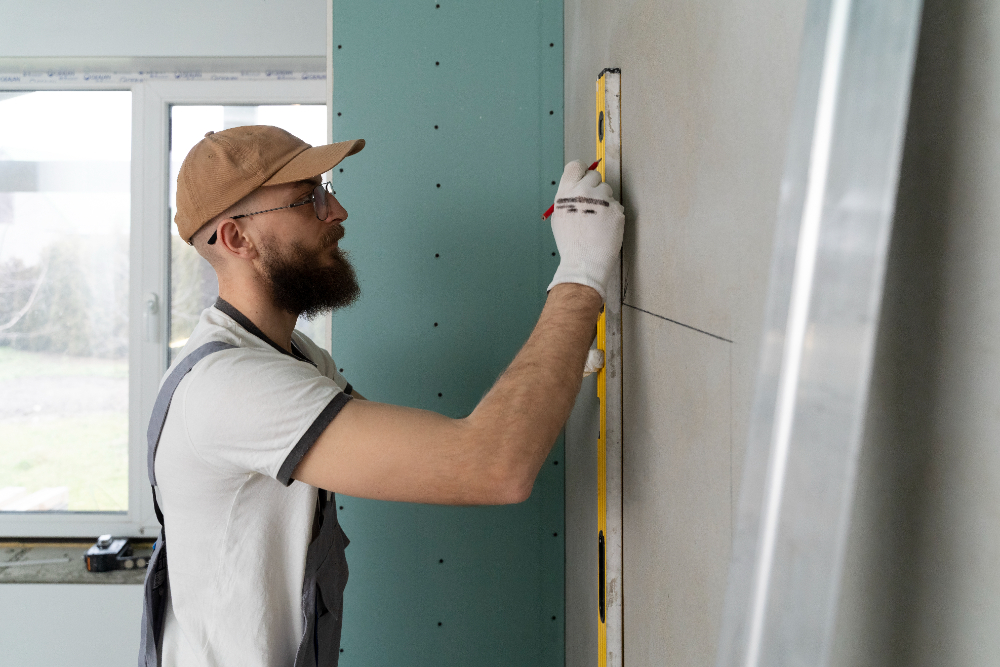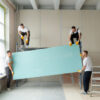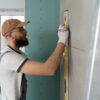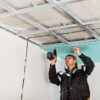When it comes to achieving flawless walls, drywall taping is where the real magic happens. It’s the difference between a wall that looks professionally finished and one that highlights every seam, joint, and imperfection. Whether you’re prepping a new build or renovating an existing room, understanding the importance of drywall taping can make or break the final outcome.
What is Drywall Taping and Why is it Important?
Drywall taping involves covering the joints between drywall panels to create a smooth, continuous surface. The tape, combined with joint compound, seals gaps, hides seams, and provides the base layer for a perfect finish.
This step is essential not only for aesthetics but also for structural durability. Proper drywall joint sealing prevents cracks, supports surface strength, and ensures better performance during seasonal expansions and contractions.
Different Types of Drywall Tape and Their Uses
Choosing the right tape for the job makes a noticeable difference. Here’s what to know:
Paper Tape vs. Mesh Tape:
– Paper tape has a solid track record for strength and is ideal for straight seams and joints.
– Mesh tape is self-adhesive and great for quick fixes or beginners, but it typically needs a setting-type compound to prevent cracks.
Corner Beads and Joint Tape:
– Use metal or plastic corner beads for sharp, durable corners.
– Joint tape reinforces seams and helps maintain a uniform, flat surface.
Selecting the right products ensures seamless wall finishing techniques that stand the test of time.
Step-by-Step Guide to Taping Drywall Like a Pro
Want that pro-level finish? Here’s the taping process broken down:
1. Prep the surface: Make sure seams are clean and dust-free.
2. Apply the first layer of joint compound.
3. Press the tape into the compound, smoothing it with a knife.
4. Let it dry fully before adding additional coats.
5. Add two or three more coats of compound, feathering each one out wider.
6. Sand gently between coats until the surface is completely smooth.
Patience is key here. Rushing the process leads to ridges, bubbles, or uneven layers that ruin the final result.
Common Mistakes in Drywall Taping and How to Avoid Them
Even small missteps in drywall taping can show up after paint goes on. Here are the most common mistakes to avoid:
Overusing Joint Compound:
– Applying too much mud can result in bulky seams that require excessive sanding.
Skipping the Sanding Process:
– Skipping or rushing sanding leads to visible edges and inconsistencies, especially after painting.
Using the Wrong Tape:
– Mesh tape in high-stress areas without setting compound can crack over time.
Drywall mud techniques require a balanced approach: apply just enough, smooth it carefully, and allow proper drying time.
The Role of Drywall Taping in Achieving a Professional Paint Finish
If your end goal is a clean, crisp paint job, drywall taping sets the stage. Well-sealed joints ensure that paint goes on evenly, and the wall surface stays blemish-free. Proper residential wall preparation with smooth seams prevents dips or bulges that catch the light post-paint.
This attention to detail is essential for interior painting, especially in high-visibility areas like living rooms, hallways, or entryways. Professional taping services often include full surface preparation to guarantee that the paint finish looks as flawless as the drywall underneath.
Conclusion
Drywall taping isn’t just a step—it’s the foundation for a beautiful, professional-looking wall. Whether you’re planning a renovation or building from scratch, investing in proper taping makes a lasting difference. If you’re aiming for seamless finishes, solid structure, and paint-ready walls, quality taping should never be overlooked.
Need help getting the job done right? Professional taping services ensure your drywall finish is smooth, strong, and ready for any topcoat.







0 Comments